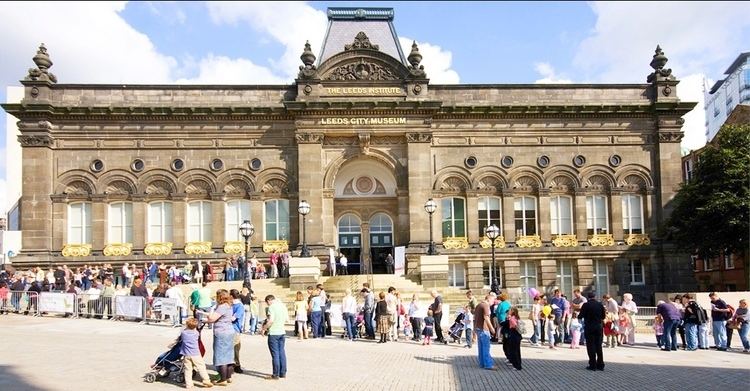Founded 13 September 2008 | Phone +44 113 224 3732 | |
 | ||
Established 1819; reopened 13 September 2008 Hours Closed now Tuesday10AM–5PMWednesday10AM–5PMThursday10AM–5PMFriday10AM–5PMSaturday11AM–5PMSunday11AM–5PMMondayClosed Similar Abbey House Museum, Leeds Industrial Museum, Thwaite Mills, Millennium Square - Leeds, Thackray Medical Museum | ||
Leeds city museum
Leeds City Museum, originally established in 1819, reopened on 13 September 2008 in Leeds, West Yorkshire, England. It is housed in the former Mechanics' Institute built by Cuthbert Brodrick, in Cookridge Street (now Millennium Square), which has been redeveloped to a design by Austin-Smith:Lord architects and Buro Happold engineers. Gallery and exhibit design is provided by Redman Design.
Contents
- Leeds city museum
- History
- The exhibits
- Life on Earth gallery
- The Leeds Tiger
- Ancient Worlds gallery
- World View gallery
- Leeds Story gallery
- Collectors Corner and shop
- References
Admission to the museum is free of charge. Special exhibitions are hosted alongside a collection of displays from the Leeds Archive.
History
In 1819, a museum was established on Park Row by the Leeds Philosophical and Literary Society, and in 1821 it opened to the public. In 1921, control of the museum was handed to the Corporation of Leeds which later became Leeds City Council. In 1941, the museum building and artifacts were badly damaged by bombing. In 1965 the museum was closed, and a few exhibits removed to a couple of rooms in the city library in 1966. The oversized Leeds Tiger, the giant moose skeleton and the carved wooden cart took up much of the space. In 1999 the museum went into storage, though researchers and the public could view items by appointment. In 2000, the resource centre at Yeadon opened, under the same appointment-to-view arrangement. In 2001, Leeds City Council bid for National Lottery cash, and in 2004, it was awarded £19.5 million, so in 2005, the Leeds Mechanics' Institute building began to be redesigned as Leeds City Museum, finally to reopen in 2008.
The exhibits
While exhibits vary, they are mainly made up of exhibits from Leeds' history. The central hall has a large map of Leeds printed on the floor. There is also a scale model of the Quarry Hill flats. The exhibits are organised among several galleries. See a slideshow here.
Life on Earth gallery
This is the natural history gallery.
The Leeds Tiger
This exhibit - so beloved of the Leeds populace that when the curators wanted to throw it away, the Yorkshire Post newspaper held a campaign to retain it - has a strange history. It was a tigerskin rug when presented to the Museum in the 19th century. Museum records give the impression that the tiger had been shot for spending too much time near a village in India. The pelt was then combined with one or more other tigerskins, and instead of being mounted properly it was stuffed with straw. For over a century it has sagged somewhat, as can be seen in the photograph. Meanwhile, the story of a tiger shot for its mere presence at the edge of a village became a legend of the killer of one man, then of two people, then the serial killer of forty. However the pelt may now be dangerous after all, in a sense, as the Victorians may have preserved it with arsenical soap. Museum staff have considered remounting it properly to improve its appearance, but it was felt that that would destroy its character and historical identity as a Victorian artefact and as the centrepiece of the museum in the eyes of the citizens.
Ancient Worlds gallery
Here are archaeological items from home and abroad.
World View gallery
Various exhibitions showcase different cultures in turn.
Leeds Story gallery
The history of Leeds from prehistory to the modern day.
Collectors Corner and shop
Various collections appear here in rotation.
